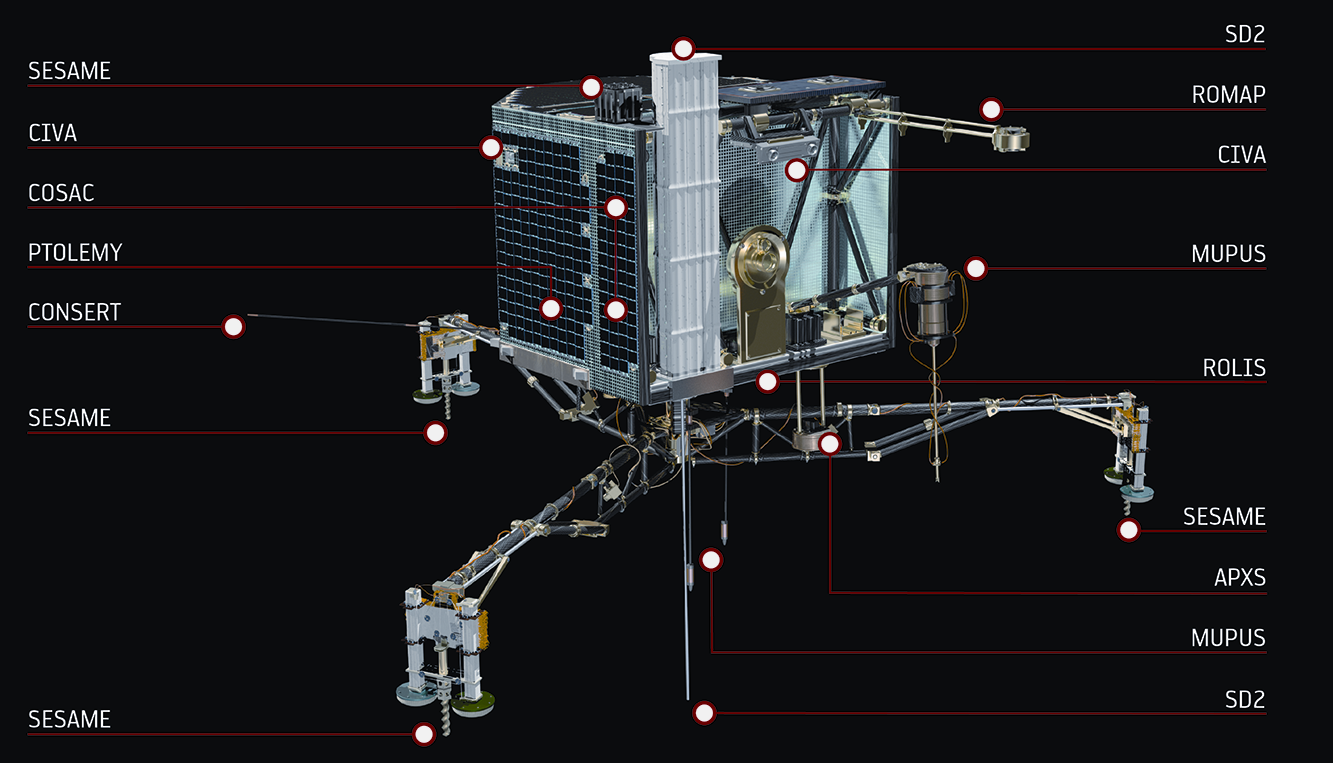
Philae lander

The Philae lander and its instruments. Copyright ESA/ATG medialab.
The Philae lander is a box-shaped module weighing approximately 100 kg, designed by a consortium consisting of members from Austria, Finland, France, Hungary, Ireland, Italy and the UK, as well as ESA and CNES, all lead by the German Aerospace Research Institute (DLR). It was released from the orbiter on the 12th of November 2014 and successfully landed on the comet's surface. Unfortunately Philae bounced several times on impact and the harpoons failed to fire, resulting in the lander coming to rest unsecured and in a shaded area.
Philae carries 9 experiments, some of which incorporate more than one instrument, and a sample collection device to provide material for analysis. The experiments are powered by solar panels mounted on the upper part of the lander. Unfortunately, the use of the Philae instruments to date has been limited by the lander's primary battery life as it came to rest in an area where the solar panels could not provide enough power to recharge the batteries. However it is hoped that, as the comet nears the sun, enough light will fall on the panels to allow Philae to reactivate.
For information regarding each instrument, click the names in the sidebar.
For further information visit.
Contact us
Any media enquiries should be directed using the links below:
The Open University
Science and Technology Facilities Council
jake.gilmore@stfc.ac.uk
http://www.stfc.ac.uk/mediaroom